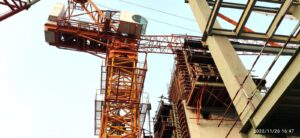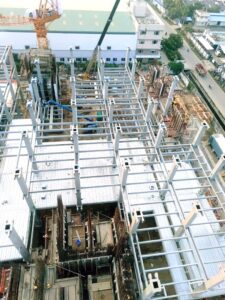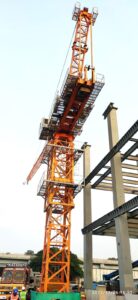INTRODUCTION
The adoption of the cloud and digital transformation of Indian companies has boosted the demand for data center services in India. The growing demand for data and high bandwidth capacity, increased number of smartphone users and adoption of cloud and digital transformation has further pushed the demand in India.
Government initiatives such as ‘Digital India’ and emphasis on self-reliance and data protection have resulted in an increased demand for data centers and cloud services. The government is also reliant on data centers for the Government-to-Citizen (G2C) delivery platforms, such as the National e-Governance Plan (NeGP), e-visa, and National CSR Data Portal to name a few.
INITIAL THOUGHT
Data centers are special structures as far as structural design is concerned. Optimum utilization of space is very important so that a maximum number of racks can be accommodated. This is a major challenge for structural designers.
After taking into consideration all the requirements of the project and the client, a proposal was made to build the structural system with steel sections. Additionally, to reduce the column size, it was suggested to adopt the option of concrete-filled sections. The floors were designed to be in steel decks with concrete screed on them and the secondary beams have been placed accordingly. Since in this system, no shuttering is required, it has reduced the construction time substantially.
PROJECT BRIEF
The project consists of high-rise DC-1 and DC-2 buildings with a connecting bridge in between. The DC-1 building consists of Ground +14 floors and the DC-2 building consists of Ground+12 floors. The buildings are essentially a composite system. Steel-framed structures with concrete-filled steel (CFT) columns have been designed to be built with no reinforcement in column sections.
The shear walls in the core are essentially reinforced concrete shear walls. The columns and shear walls are connected to each other with steel beams and a deck slab which acts as in-plane rigid diaphragms for each of the floors. Floor beams will be designed for both the side moment connections and in some cases for shear connections as well.




CHALLENGES
Designing data centers are a challenge in itself. In this particular data center project, the imposed loading for the buildings is as high as 1500 kg/m2 for the racks and 1000 kg/m2 for the machinery. Since large column-free space is required for data centers, it was the key requirement of the project that large spans shall be handled with higher loading and smaller sections of structural members. In order to accommodate the racks, the beam depth needed to be minimum. Keeping in mind these specific conditions, a design was made where the main beams would have a depth of 550 mm and secondary beams would have a depth of 450 mm. The 100 mm depth between the main and secondary beams will be utilized for services.

“Data Centers are such projects where a fast turnaround is a key requirement. So the solution of a structural steel system was proposed to the client. We used the hollow column sections with concrete filled inside due to which the column size was reduced to a smaller section of 750x 750 mm. This enabled the efficient utilization of space. The use of structural steel sections facilitated the handling of higher loads of data centers with a minimum size of sections.”
Nikhil Inamdar, Director, Strudcom Consultants Pvt. Ltd.
STRUCTURAL UNIQUENESS
No shuttering is required in this structure like in typical RCC structures which increases the speed of construction substantially. In the construction of RCC structures, shuttering and concreting are the major activities. In the construction of steel structures, these activities are limited only to shear walls.
FUTURE OF DATA CENTERS
Data centers have been classified in the infrastructure category in the 2022 Union Budget. This milestone has opened up the capital-intensive industry to FDI and has established India as a new hot destination for data center activity in the region. Global players are investing in Indian data centers, taking the concept beyond metro cities in the country. This trend promises to become a flood as the demand for digital services grows and the use of technologies such as 5G and IoT becomes more mainstream over the next couple of years.
IN CONCLUSION
Typically, a traditional model data center can take anywhere between 18 to 24 months to build and even longer, given the planning, design, and onsite fabrication. With the hyper-competitiveness of the market, and rise in demand, clients have multiple choices and, in most cases, may not be willing to wait this long. Building data centers with structural steel will bring about substantial savings in the timeline of the data center building projects.





